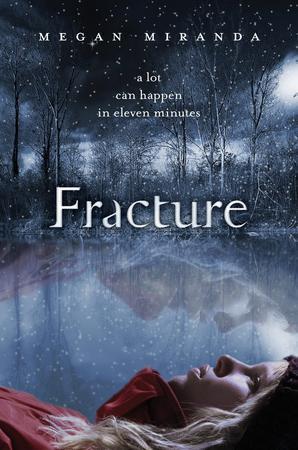 There’s something really universal about teenage experiences says author Megan Miranda. Those experiences may not be external, she says, but internally. It’s one of the reasons YA resonates with her emotionally.
There’s something really universal about teenage experiences says author Megan Miranda. Those experiences may not be external, she says, but internally. It’s one of the reasons YA resonates with her emotionally.
“It’s such a pivotal time, when we discover who we will become,” she told Cracking the Cover. “I’m really drawn to it. Also, I find that YA is a very liberating bracket to write in. You can blend genres a little more freely and not worry about where it will fit on the shelves.”
Megan is the author of “Fracture,” a YA novel about a young woman named Delaney who survives spending 11 minutes under water after falling through the ice on a lake. Despite some odd brain scans, Delaney seems to make a full recovery. But she knows she’s different, deadly different.
The idea for “Fracture” was born out of Megan’s love for science. She’s always loved the subject, but the more she studied, the more she found herself drawn to the stories of the unexplained.
“I’d find myself thinking a lot about the stories of people who were supposed to die, but lived,” Megan said. “In particular, I was drawn to the mysteries of the brain. I’d hear stories of people who got a tumor, or had a tumor removed, and their personalities changed. To me, this begged the question: Which person are you? If someone is mostly the same, but something has changed, how do others treat this person? How do they see themselves? I had all these questions churning away inside of me as I wrote “Fracture.”
The brain is fascinating because we know so much about nearly everything else related to the human body, Megan says. “We’ve mapped the human genome, we know how diseases work (even if we can’t cure them), and we know how to *fix* many different organs. But there is still so much unknown about the brain. Why do people with the same injury have completely different recoveries? How much of us (and therefore our brains) is determined by our DNA? How much of us is something more?”
 Though Megan had lots of questions, she didn’t have a lot of answers, so writing about brain injuries in particular required a lot of research on Miranda’s part. She did a lot of fact checking and researched hospital tests and brain recoveries as much as possible. First-hand accounts of people recovering from brain injuries became another aspect of research. And Megan also looked into how to rescue a person who had fallen through ice and how and why that might happen.
Though Megan had lots of questions, she didn’t have a lot of answers, so writing about brain injuries in particular required a lot of research on Miranda’s part. She did a lot of fact checking and researched hospital tests and brain recoveries as much as possible. First-hand accounts of people recovering from brain injuries became another aspect of research. And Megan also looked into how to rescue a person who had fallen through ice and how and why that might happen.
All said, it took Megan four months to write the first version of “Fracture” — “very little of which made it into the finished product.” It was another six months rewriting — and rewriting — until she felt she got it right.
Megan says the entire plot of “Fracture” is unrecognizable from her original conception. “The core idea of it remains the same: A girl who survives 11 minutes trapped under ice survives but finds herself drawn to the dying. But everything else changed. Fracture became a thriller the third time I wrote it. All of the character relationships shifted.
Looking back to where she started, Megan says she’s much more conscious now of the bigger picture when she’s writing. “I’m usually asking myself what the purpose of a scene is while I’m writing it, and whether it’s necessary,” she said. “And I try to know where the story is going before I get there… that’s not to say I still don’t have to go through multiple drafts, but at least parts of those drafts are salvageable now!”
Now that her book is published and on bookshelves around the world, Megan says it belongs to other people, that it means different things to different people based on their experiences. But if she could wish one thing that they take away: “I hope they wonder like Delaney does, whether she’s doing all she can to seize the day.”
**Megan took a lot of time and care to answer Cracking the Cover’s questions. Read a complete transcript of her interview. Also, read Cracking the Cover’s review of “Fracture.”

1 Comment
Pingback: crackingthecover.comMegan Miranda's 'Fracture' feels very personal » crackingthecover.com